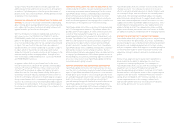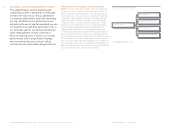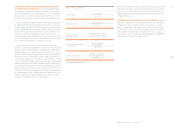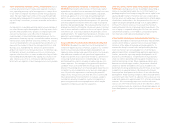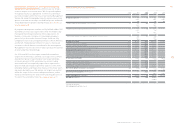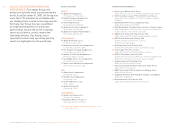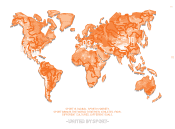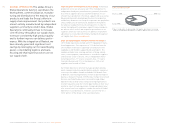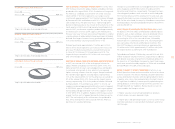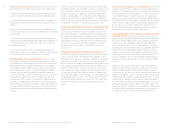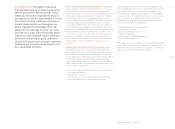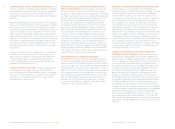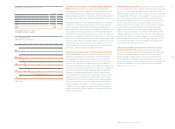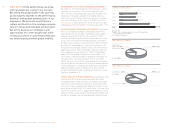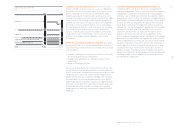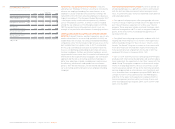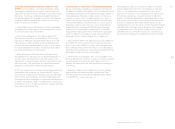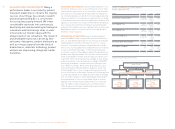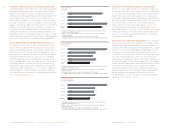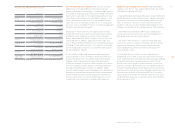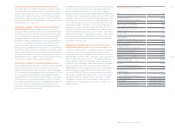Reebok 2007 Annual Report Download - page 69
Download and view the complete annual report
Please find page 69 of the 2007 Reebok annual report below. You can navigate through the pages in the report by either clicking on the pages listed below, or by using the keyword search tool below to find specific information within the annual report.065
ANNUAL REPORT 2007 --- adidas Group
02
SUSTAINABILITY The adidas Grou
p
must
mana
g
e wide-ran
g
in
g
commercial and com-
petitive pressures to deliver
g
rowth.
S
imul-
t
aneously, we have a res
p
ons
i
b
i
l
i
ty towards
our em
p
loyees and the environment, to ensure
t
hat decent working conditions and environ-
menta
l
stan
d
ar
d
s are met t
h
rou
gh
out our
g
lobal or
g
an
i
zat
i
on and supply cha
i
n. We
always str
i
ve to manage both our own act
i
v
-
ities and our su
pp
ly chain res
p
onsibly and to
reduce our environmental impact. Moreover,
we bel
i
eve that act
i
n
g
as
g
ood corporate
c
i
t
i
zens w
i
ll
i
m
p
rove our cor
p
orate re
p
utat
i
on
and hence our economic value, helping us to
be a sus tainable company.
ACTIVE ENGAGEMENT WITH STAKEHOLDERS At the adidas
Group, we pursue a policy of open dialog with our numerous
stakeholders. We actively and systematically engage with
them, involving them in key social and environmental decisions
that shape our day-to-day operations. Through our member-
ship in organizations such as the World Business Council
for Sustainable Development (WBCSD), the World Federation
of the Sporting Goods Industry (WFSGI), the Fair Factories
Clearinghouse (FFC) and the Fair Labor Association (FLA), we
work closely with top companies from a variety of sectors to
develop sustainable business approaches and to debate social
and environmental topics on a global level. In addition, we
always strive to report in an open and transparent way. Com-
prehensive information on the Group’s social and environ-
mental programs is provided in our 2007 Social and Environ -
mental
Report and on our website.
www.adidas-Group.com/
sustainability
WORKPLACE STANDARDS SET RULES IN SUPPLY CHAIN
Following the acquisition of Reebok, we combined the best of
both companies’ previous social and environmental programs
and created a new Group-wide set of Workplace Standards
for our supply chain. These are based on International Labour
Organization (ILO) and UN conventions relating to human
rights and employment practices, and they follow the WFSGI
model code of conduct. Our Workplace Standards contain clear
rules of conduct regarding:
- Environmentally sound, safe and healthy working conditions
- Fair wages and benefi ts
- Freedom of association
- Prohibition of excessive overtime, forced and child labor
- Protection against harassment and discrimination
These Standards help us select manufacturing partners and
serve as guiding principles in the early identifi cation and treat-
ment of potential issues of concern at our suppliers’ sites.
To illustrate how suppliers should implement our Standards,
we have created a set of guidelines for use in factory settings,
which we update on a regular basis. Currently, we have
six guidelines (complemented by specifi c supplementary
materials) covering the following areas:
- Health, Safety and Environment (HSE)
- Employment Standards
- Best Environmental Practice
- Worker Cooperatives
- Enforcement of Workplace Standards
- Sustainable Compliance
The guidelines are also used by our Social and Environmental
Affairs (SEA) team to determine suppliers’ compliance with our
Standards and to advise and train our suppliers in improving
their social and environmental performance.


